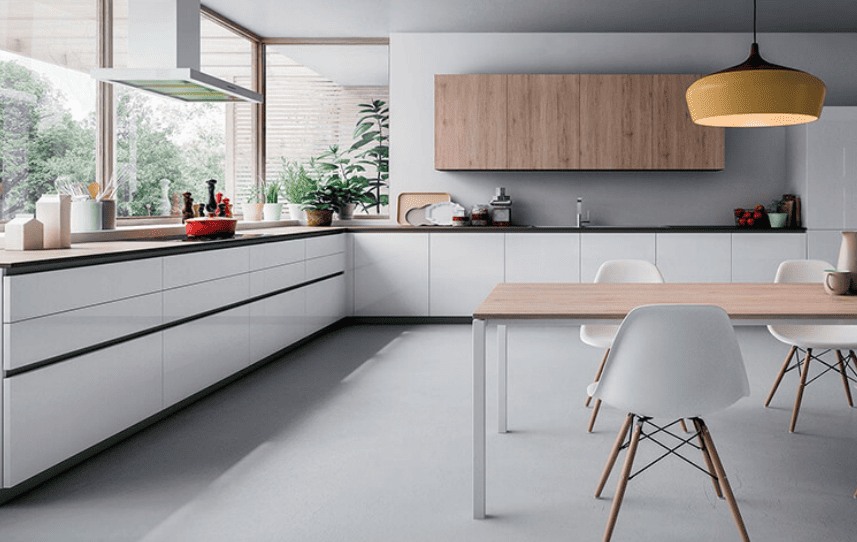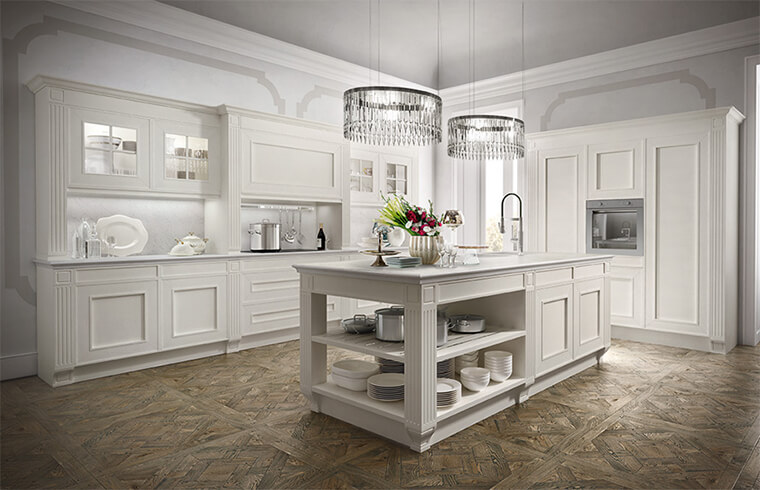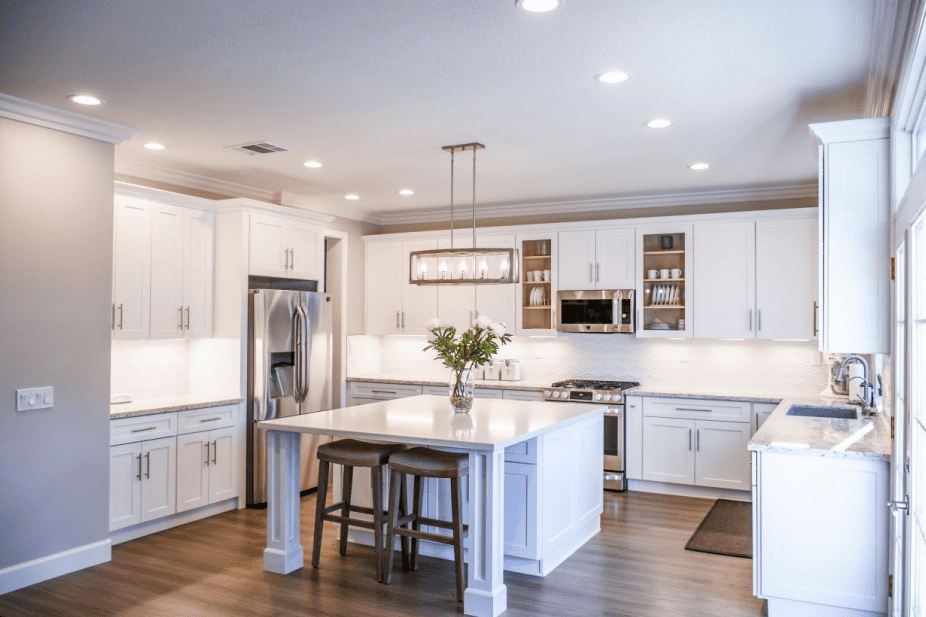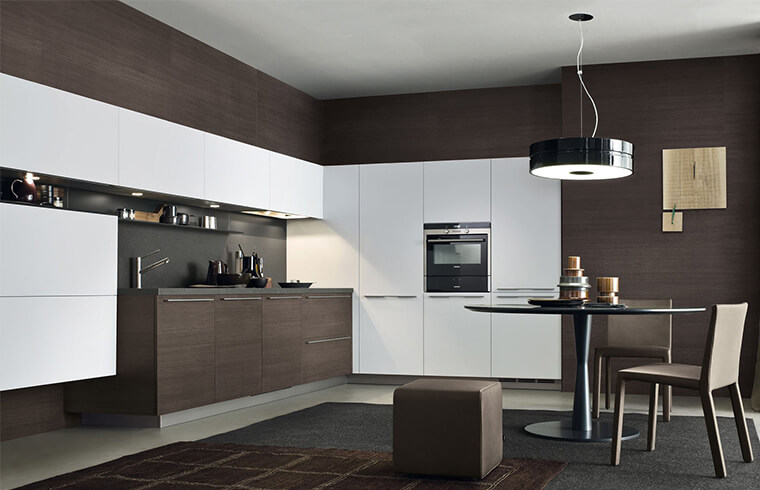When it comes to designing or renovating your kitchen, choosing the right cabinets is a crucial decision that can significantly impact both the functionality and aesthetics of the space. There are numerous factors to take into account, and understanding them will help you make an informed choice. Here's a comprehensive guide on what you should consider when selecting cabinets for your kitchen.
Setting a realistic budget is the first step in choosing kitchen cabinets. Your budget will determine the range of options available to you and act as a guiding factor throughout the selection process.
Low budgets might steer you towards more affordable materials like particleboard cabinets with laminate finishes. While these can offer a decent look and basic functionality, they may not have the same durability as higher-end options. On the other hand, a moderate budget could open up possibilities for plywood cabinets or those with solid wood veneers. These materials strike a good balance between cost and quality, providing better resistance to wear and tear.
If you have a higher budget and plan to stay in your home for a long time, investing in all-solid-wood custom cabinets might be worthwhile. They are not only durable but also exude a luxurious and timeless appeal. Consider your home's intended use too. If you're renovating for a quick sale, a more budget-friendly option that still looks attractive can be a smart choice, as it allows you to maximize your return on investment.
Remember to factor in additional costs like installation, hardware, and any customizations you might desire. By having a clear budget in mind and understanding the trade-offs at different price points, you can make the best use of your funds while getting cabinets that meet your needs.

The material of your cabinets plays a vital role in their durability, appearance, and maintenance requirements.
Solid wood cabinets are a classic choice, renowned for their natural beauty and strength. Woods like oak, maple, and cherry can withstand years of use and can be refinished multiple times to update their look. However, they do require regular maintenance, such as protecting them from humidity and temperature changes to prevent warping or cracking.
Plywood is another excellent option. Constructed from multiple layers of wood veneer, it offers exceptional strength and resistance to warping. It's more affordable than solid wood in many cases and can also be refinished if needed. Plywood's ability to handle moisture makes it a great choice for kitchen environments where spills and humidity are common.
Medium Density Fiberboard (MDF) cabinets have a smooth and uniform surface, making them ideal for painted finishes. They are cost-effective and can create a sleek look. However, MDF is prone to moisture damage, so it's crucial to keep it away from areas where it might come into contact with water, like near the sink.
Thermofoil cabinets consist of a thin vinyl layer molded onto an MDF base. They are easy to clean and offer a seamless appearance. But over time, they may be susceptible to peeling or discoloration.
For those environmentally conscious, consider cabinets with eco-friendly veneers made from sustainable materials like bamboo or reclaimed wood. This way, you can enjoy beautiful cabinets while reducing your environmental footprint.

The style of your cabinet doors can transform the entire look of your kitchen.
Glass insert doors add an elegant and sophisticated touch. You can choose clear glass to display your beautiful dishware, or frosted or textured glass for a bit of privacy while still allowing light to pass through. They work wonders in creating a modern, minimalist kitchen design, making the space feel open and airy.
Slab style doors, with their flat and seamless appearance, are perfect for contemporary kitchens. They offer a sleek and streamlined look that emphasizes simplicity and clean lines.
Raised panel doors, on the other hand, bring a traditional and charming aesthetic. The raised center panel gives the doors depth and dimension, and they come in various styles like arched, square, or cathedral, allowing you to customize the look to match your preferred traditional or classic kitchen theme.
When choosing a door style, consider how it will blend with the overall style of your kitchen, whether it's modern, traditional, or something in between.
The color and finish of your cabinets can set the tone for the entire kitchen.
Lighter colors, such as whites, creams, or light grays, tend to make smaller kitchens appear more spacious and bright. They create an open and airy atmosphere, making the space feel larger than it actually is. In contrast, darker colors like navy blue, forest green, or rich espresso can add depth and a sense of luxury to larger kitchens, creating a cozy and inviting ambiance.
It's also essential to choose a color palette that complements the other elements in your kitchen, such as the flooring, countertops, and backsplash. For a cohesive look, consider the undertones of these materials and select cabinet colors that harmonize with them.
When it comes to finishes, options like painted, stained, or laminated finishes each have their own characteristics. Painted finishes offer a wide range of color choices and can give a clean, modern look. Stained finishes enhance the natural beauty of the wood, highlighting its grain and texture. Laminated finishes are durable and easy to clean, making them a practical choice for busy kitchens.

Don't underestimate the impact of cabinet hardware on both the functionality and style of your cabinets.
Pulls are a popular choice for modern kitchens. They come in various lengths, materials, and designs, from sleek metal bars to more elaborate shapes. Handles, with their classic look, are often associated with traditional cabinetry and provide a comfortable grip for opening and closing doors and drawers. Knobs, on the other hand, add a touch of elegance and can be a charming detail, especially on smaller cabinets or drawers.
When selecting hardware, ensure it is of good quality for smooth operation. Look for features like soft-close mechanisms for drawers and doors to prevent slamming and add a touch of luxury. Also, consider the compatibility of the hardware with the overall style and color of your cabinets. For example, brushed nickel hardware might work well with a contemporary kitchen, while oil-rubbed bronze can enhance a more rustic or traditional look.
Your kitchen cabinets should be designed to meet your specific storage needs.
Start by assessing the items you need to store, including dishes, pots, pans, small appliances, and food supplies. Cabinets with adjustable shelves are highly beneficial as they allow you to customize the space according to the height of different items. Pull-out shelves are a game-changer, especially for accessing items at the back of deep cabinets without having to bend over or rummage through everything.
Corner cabinets can often be underutilized, but with the help of lazy susans or corner pull-out organizers, you can make the most of this space. Deep drawers are ideal for storing large pots and pans, keeping them organized and easily accessible. You can also consider specialized storage options like spice racks, built-in dividers for utensils, or pull-down shelves in tall cabinets for better access to items on higher shelves.
By tailoring the storage features of your cabinets to your lifestyle and cooking habits, you can ensure a more organized and efficient kitchen.

The size and layout of your cabinets are key considerations for optimizing your kitchen space.
Standard cabinet sizes are widely available and designed to fit most kitchen layouts. For example, base cabinets typically have a height that is comfortable for working on countertops, while wall-mounted cabinets are usually shallower to avoid feeling too imposing. However, custom cabinets can be tailored to fit unique kitchen dimensions or specific storage requirements.
When determining the height of your cabinets, think about the people who will be using the kitchen. Adjustable shelves or pull-out features can help make the contents accessible to individuals of different heights. In terms of layout, consider the workflow in your kitchen. An "L" -shaped layout might be ideal for smaller kitchens, providing ample counter space and storage while keeping everything within easy reach. A "U" -shaped layout offers even more storage and workspace, perfect for larger kitchens or those who do a lot of cooking.
Take into account any architectural features or limitations of your kitchen space when choosing the size and layout of your cabinets to ensure a seamless fit and maximum functionality.
The choice between open shelving and traditional closed cabinets depends on your personal preferences and the functionality you desire.
Open shelving can create a more open and airy feel in the kitchen. It's a great way to display decorative items like colorful dishware, glassware, or plants, adding a personal touch and a focal point to the space. However, it requires regular organization and cleaning as everything is on display and exposed to dust and grease.
Traditional closed cabinets, on the other hand, offer the advantage of hiding clutter and keeping the kitchen looking neat and tidy. They are perfect for storing items that you don't want to be visible, such as small appliances, canned goods, or cleaning supplies. But they can sometimes make a kitchen feel more closed off, especially in smaller spaces.
You can also consider a combination of both, using open shelving for display purposes and closed cabinets for storage, to achieve a balance between style and functionality.
We employ cookies to analyze website traffic and enhance your browsing experience. Data securely aggregated, privacy protected. See Privacy Policy for details.